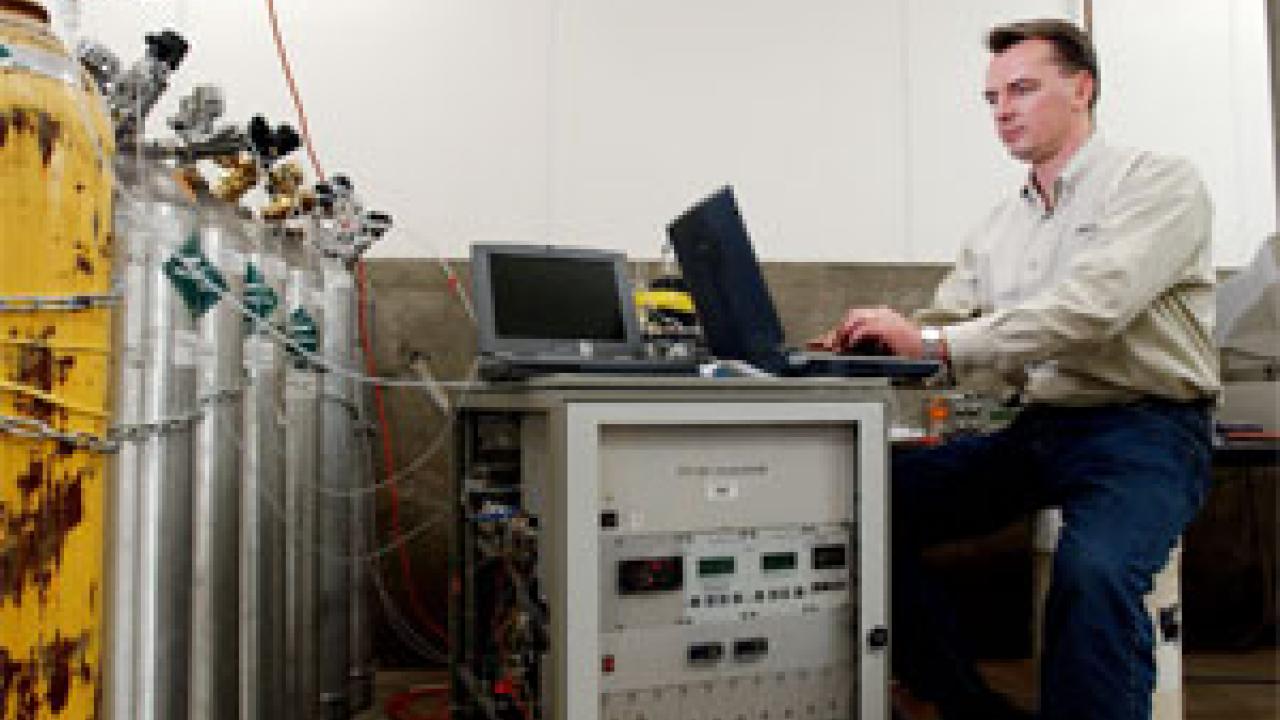California dairy cows produce only half the amount of certain air pollutants as had been believed and, perhaps more important, most of a dairy cow's contribution to smog comes not from her fresh manure, but from her belching, according to preliminary findings by a UC Davis scientist.
Those unexpected results may affect the thinking and practices of California regulators and dairy operators trying to reduce air pollution.
"We have to re-think the idea that the only good solutions are engineering solutions, and consider biological avenues such as animal feeding and management to reduce emissions," said Frank Mitloehner, the UC Davis air quality specialist who is conducting the study.
For three months, Mitloehner and his co-workers have studied dairy cows in sealed environmental chambers to simulate emissions from one type of cow housing, known as freestall conditions. Under these controlled conditions -- the first study of its kind -- the researchers were able to collect precise measurements of the volatile organic compound (VOC) emissions that cows and their fresh waste produce.
"For the first time we can tell dairy farmers the source of VOCs from the cow-housing part of their dairy," Mitloehner said. "For the most tightly regulated pollutant, the 700 ozone-forming gases collectively called volatile organic compounds, that source is not the cows' fresh waste. It's the cows."
Mitloehner added that studies of emissions from cows housed on dirt-floored corrals as well as waste storage facilities are ongoing, and those findings are needed to arrive at a more complete picture of whole-dairy VOC emissions.
The $4.6 billion, 1.5 million-cow California dairy industry -- the largest in the world -- is eagerly awaiting these findings as dairy producers scramble to comply with strict new pollution-control rules.
The dairy-air study will last for two more weeks, but the California Air Resources Board asked Mitloehner and others to present their preliminary findings last week at a public meeting of the San Joaquin Valley Air Pollution Control District in Fresno.
The study was prompted by concern over air quality in the San Joaquin Valley, which ranks as the worst in the country. The No. 1 source of ozone (smog) air pollution in the valley is exhaust emissions from trucks and cars. The No. 2 source is thought to be gases from cows and their waste on dairy farms.
Using state-of-the-art air-collection and analytical technology, and two environmental chambers to house the cows, Mitloehner precisely measured animal and waste production of volatile organic gases and other pollutants like ammonia and methane. He also videotaped the cows to correlate the timing of emissions with their activities, such as eating, ruminating and excreting.
The only previous estimate of total VOCs -- the estimate that California's rigid new air standard is based on -- is derived from a study of methane, not VOCs, conducted in 1938. That old estimate says that a cow produces 12.8 pounds of VOCs per year -- about twice the amount that Mitloehner and researchers from other institutions found.
Mitloehner is lead scientist on the $85,000 study, which is funded by the U.S. Environmental Protection Agency (Region IX) and the San Joaquin Valley Air Pollution Control District.
Mitloehner is an expert on dairies and air pollution. He is a UC Cooperative Extension specialist in the Department of Animal Science in the UC Davis College of Agricultural and Environmental Sciences. He also is the chair of the UC Davis Agricultural Air Quality Center, which has 24 associated faculty members.
His collaborators on this study are 14 atmospheric scientists, engineers and physicists -- six from UC Davis, three from Stanford University, two from UC Berkeley, and one each from Harvard University, Iowa State University and the U.S. Department of Agriculture. His UC Davis collaborators are: Robert Flocchini, Terry Cassel and Rick Higashi of Crocker Nuclear Laboratory and Ed DePeters, Peter Robinson and Jim Fadel of the Department of Animal Science.
